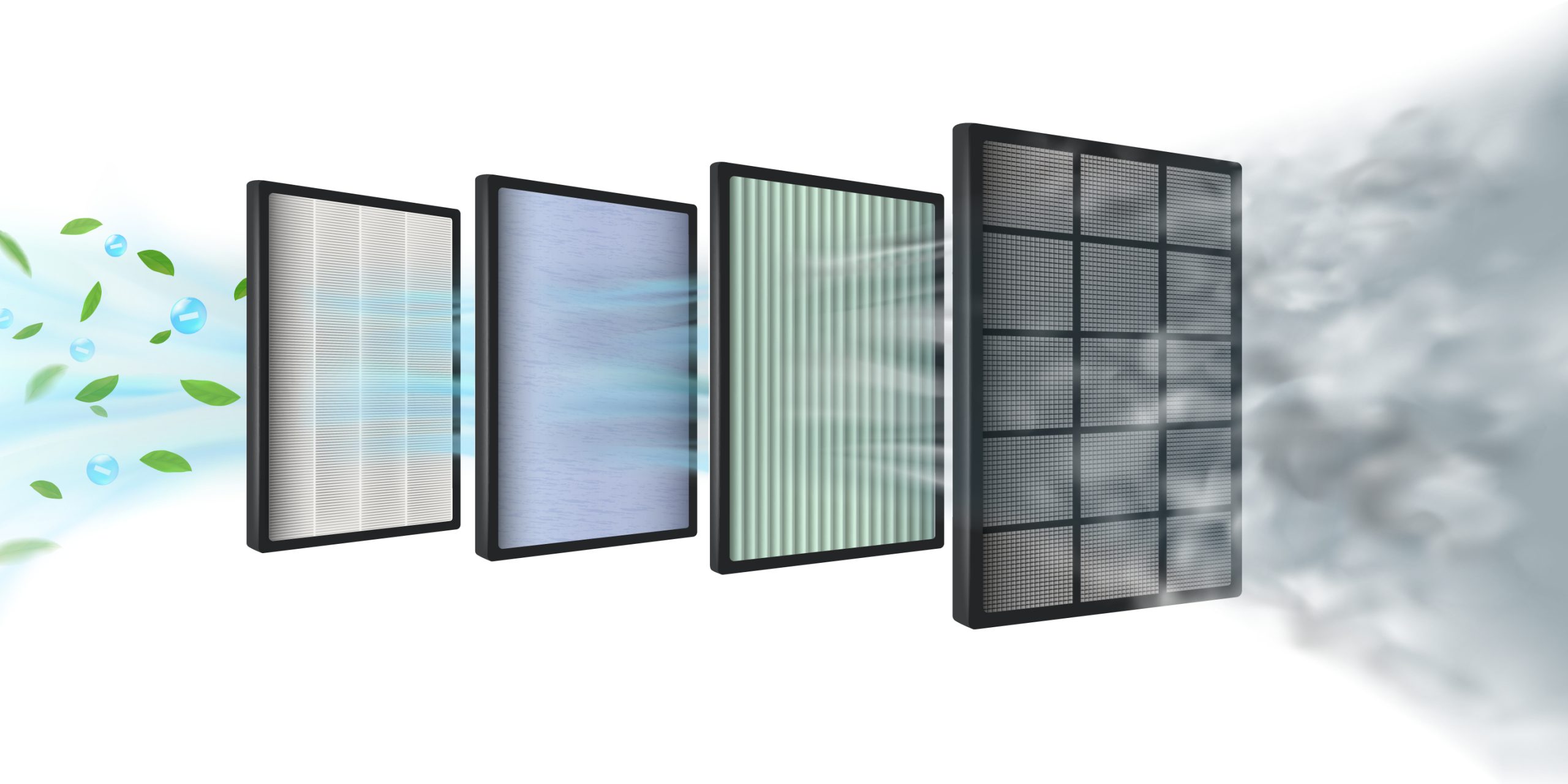
In too many cases, the air quality inside your Phoenix home or business is just as bad, if not worse, than the air outside. This can lead to a variety of health issues, from eye, nose, and throat irritation to headaches to asthma attacks. These symptoms can occur after just a single exposure to an indoor air pollutant.
To prevent these health issues from occurring, you should install some sort of device that helps keep the air clean. Two common products are air scrubbers and air purifiers. But what’s the difference between these two products, and which one is more appropriate for your home or business? This guide should help you answer these key questions.
Before We Begin, Some Chemistry Basics
You may have heard the term “atom” before. Atoms are microscopic bits of matter made up of even tinier components called protons, neutrons, and electrons. These components carry a positive, neutral, or negative charge, respectively.
You may also have heard the term “ion” before. Ions are atoms that either lack or carry an extra electron. A positive ion has too few electrons. A negative ion has too many electrons.
Atoms always seek to become neutral. So, a negatively ionized atom will seek to pair with a positively ionized atom and vice versa.
Most air pollutants are made up of ions with a positive charge. To remove the pollutants from the air, they will need to pair with negative ions.
Both air scrubbers and air purifiers use negative ions to help remove pollutants from the air. Their fundamental difference, then, is how they use these negative ions to cleanse your home’s or business’ air.
What Is An Air Scrubber?
An air scrubber is a portable device capable of cleaning spaces with areas consisting of hundreds of square feet. This makes air scrubbers especially effective in commercial or industrial buildings.
Every air scrubber contains at least two filters. The first filter helps to remove large particles from the air. These are things like dust or pollen.
The second filter is considered the primary filter. It uses either a dry or wet scrubber to filter the air a second time. As air passes through a dry scrubber, the positively charged air pollutants are trapped by the negative ions that make up the filtering material, often called sorbent.
A wet filter, though, holds a special fluid made up of negative ions. Again, the negative ions pair with positively charged air pollutants that pass through it. The resulting air is clean of pollutants, toxins, and other harmful particles.
Some air scrubbers may have additional filters, such as HEPA or carbon ones, or use UV light technology to kill germs. These provide another barrier for air to pass through that catches irritants, contaminants, and pollutants.
What Are Air Scrubber Benefits?
Air scrubbers can clean the air of large interior areas. This makes them ideal for commercial office spaces, expansive industrial settings, and manufacturing plants. If your workspace uses combustion appliances, central heating systems, cleaning products, or pesticides, it can benefit from good air scrubbing.
In cases of natural disasters, such as wildfires, a common occurrence in Arizona, an air scrubber can also help make sure the poor outside air quality doesn’t impact the air inside your business.
While most air scrubbers are separate devices that suck in dirty air and shoot out clean air, some can be installed directly into a building’s HVAC. This can help ensure that the constantly circulating air remains clean throughout the day.
Smaller air scrubbers also exist for residential cases. This means that if your home needs heavy-duty air scrubbing, you’ll still be able to find a solution.
What Is An Air Purifier?
Air purifiers are typically used in residential settings and are installed directly into the HVAC system. Just like an air scrubber, an air purifier will clean the air of harmful or toxic substances, leaving only clean air for you to breathe.
Using a HEPA filter, an air purifier can remove 99.9% of pollutants, including bacteria and microscopic pollutants. As air passes through this filter, the positively charged contaminants attach themselves to the negatively charged ions in the filter, preventing them from escaping with the clean air.
Some air purifiers also blow negative ions into the air. Again, these negative ions pair with the positively charged pollutants. This can make the molecules heavy enough to fall to the ground, where they can be vacuumed up and disposed of.
An air purifier can also remove odors from the air, such as cigarette smoke, through an activated carbon filter. Not all purifiers have this filter, but many do, and it can help make the air breathable if someone smokes inside your home or office.
High-quality air purifiers should also contain UV light technology that can eliminate germs. This helps during cold and flu season, as it keeps those viruses from cycling through the HVAC system.
What Are Air Purifier Benefits?
As with an air scrubber, the main benefit of an air purifier is clean air. It will also fit neatly within an HVAC system, meaning you don’t need additional equipment that takes up extra space within your home or work setting.
Typically, air purifiers are more likely used in residential spaces. While they can be used in industrial or commercial areas, they often lack the power or strength of high-intensity air scrubbers.
How Can A-Z Air Duct Help?
If you need help keeping the air inside your Phoenix area home or business clean, contact A-Z Air Duct today. We provide a variety of services, such as commercial and residential air duct cleaning and air purification, that can help keep you, your family, or your coworkers breathing clean air.
Contact us today for a free quote. You can also call us at 602-466-2234.
Other Commercial Services:
Featured Image: Shutterstock / VectorManZone
